7 of our favorite Frankensteined vehicles
This Halloween we’d like to look back at some of our favorite cars that were stitched together by mad scientists who saw creative potential where others saw a pile of parts. Pop culture’s version of Victor Frankenstein’s monster is crudely sewn together. He’s clumsy, plodding, and dim-witted. These four-wheeled creations, in contrast, show that splicing sheet metal and trim can truly be an art form. (And they don’t try to take revenge upon their creators.)
While we still appreciate the painstaking talent showcased in a flawless restoration, we’ve got a soft spot for those that see a production car as merely a jumping-off point. Here are seven of our favorite Frankensteined vehicles, in no particular order.
The Hirohata Merc

Masato Hirohata’s 1951 Mercury set the custom car world on its ear and has been the high-water mark for lead sleds since its inception. Built at Barris Kustoms by the Barris brothers and Frank Sonzogni, the chopped and stylized Mercury used side trim from a 1952 Buick and the grille pieces from three 1951 Fords. The icy-cool green paint is the perfect shade for the smooth cruiser and the two-tone at the trim break highlights its low-slung stance.
Pure Vision’s Nova/Camaro
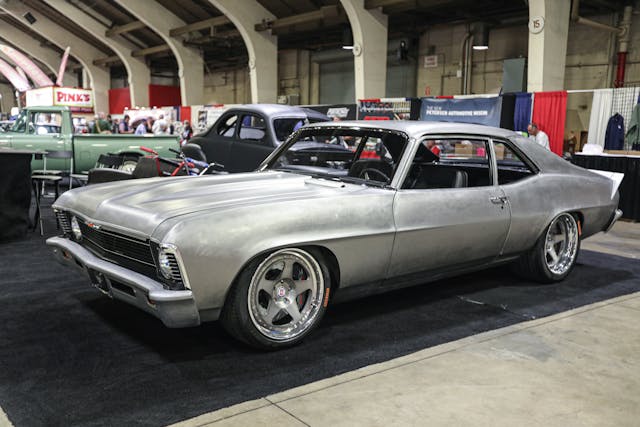
Chevrolet used the platform for the upcoming ’68 Nova to move the ’67 Camaro and Firebird into production the same way Ford used the Falcon platform to develop the Mustang. While the Nova was built in more utilitarian four-door variants, the Camaro got to bask in coupe and convertible form as the sexier pony car. That’s not to say that a two-door Nova can’t be cool, but what if it gained a bit more of the Camaro’s verve?
Pure Vision, the custom car shop known for building “what if?” cars blending styles from two divergent genres, cooked up a Nova/Camaro amalgam that adds the ’69 Camaro’s characteristic wheelwell-trailing body lines to give the Nova some much-appreciated sportiness. Even in bare metal, the effect is striking.
“The Beast” International Harvester Travelall
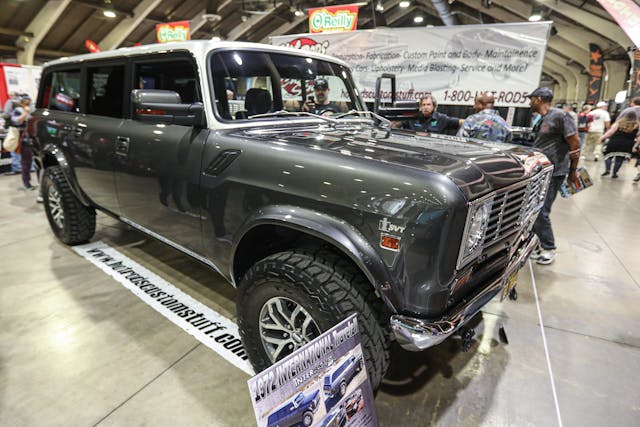
Bob and Bobbie Mowry had Hot Rods & Custom Stuff in Escondido, California, graft a 1972 International Travelall onto the chassis and drivetrain of a 2013 Ford Raptor. Of course, the process wasn’t quite as simple as dropping the body onto the frame. The Raptor’s wheelbase is 14 inches longer than the International’s, so the SUV’s body had to be stretched. Still, the result is seamless.
Inside, the Ford donated its floorboards, firewall, and the interior. The Travelall is an underrated and somewhat forgotten SUV, and its relatively obscure status garners this creation even more inquiring looks. Its 6.2-liter V-8 and long-travel suspension, combined with comfortable seating for five and lots of enclosed storage, make this one of the coolest road/camping trip restomods we’ve seen.
CadMad

This wild Cadillac/Nomad combination, dubbed CadMad, won the Ridler award last year after a nearly fifteen-year build process. It combines a ’59 Cadillac Eldorado Brougham with the roof of a Tri-Five Chevy Nomad and was built in Escondido, California at Super Rides by Jordan. The sleek, chopped wagon is powered by a monster of a twin-turbo big-block Chevy V-8 built by Nelson Racing Engines and good for four-digit horsepower. It’s the grand touring, luxury shooting brake that Cadillac never made.
Deora
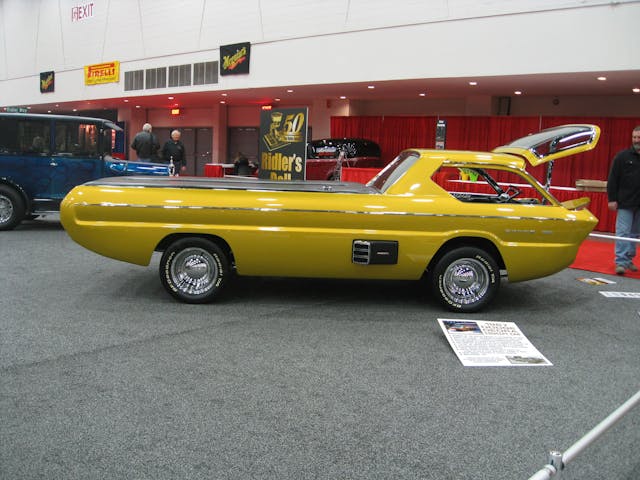
Famed customizers Mike and Larry Alexander built one of the coolest cab-forward pickups ever, the Deora, by adding Ford wagon sheetmetal and glass, among other parts, to a Dodge A100 van. It won the Ridler award in 1967. The creation was the brainchild of famed designer Harry Bentley Bradley and went onto be one of the original 16 Hot Wheels, cementing its place in popular culture.
Big-block-Porsche-powered 1934 Ford
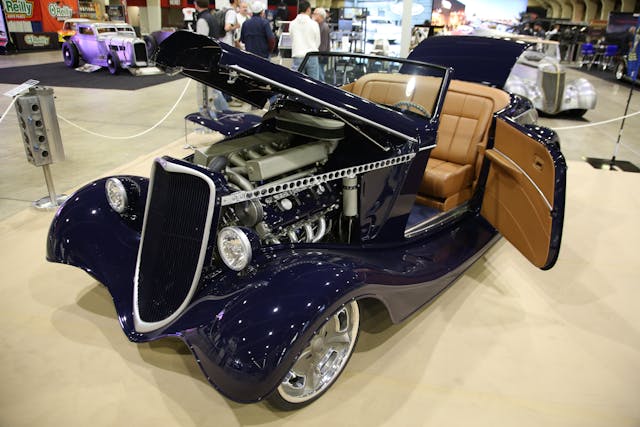
Pete Aardema is a fixture in land-speed racing and his wild engine builds have helped put him into the SCTA record books dozens of times. His name is currently attached to 11 Bonneville records and 15 El Mirage records, so the man knows what he’s doing.
Aardema is an overhead-cam fanatic and has gone to great lengths to put better-breathing heads on engines. Case in point—his 2018 America’s Most Beautiful Roadster contender, a ’34 Ford with an SOHC big-block Chevy displacing 440 cubic inches. You may be thinking that Chevy never made an SOHC big-block, and you’d be right. However, Aardema noticed that the bore spacing in the Porsche 928’s V-8 was close enough to the big Chevy and that the heads could be adapted to fit and give the engine a much-deserved boost in airflow along with much more displacement than Stuttgart had in mind.
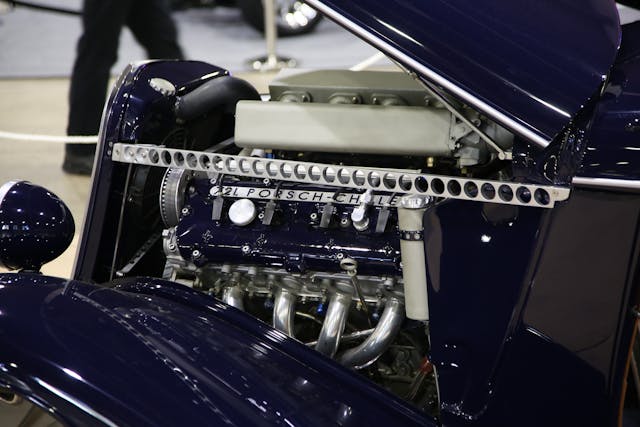
Queen Manx
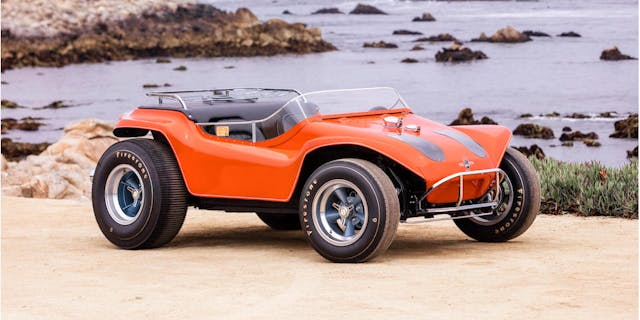
Bruce Meyers created an entirely new class of car when he shortened a VW Beetle floorpan and dropped a lightweight fiberglass body on top. The Meyers Manx dune buggy had dozens of imitators, but the real deal is still what many collectors admire most. The Manx in its original form was already a bit of a Frankensteined car but one in particular, built for the Steve McQueen and Faye Dunaway film The Thomas Crown Affair, fits the bill even better.
This custom buggy, known as the Queen Manx, features extended side pods, recessed headlights, a wraparound windshield, and hot-rodded flat-six power from a Chevy Corvair. It was recently brought back into the public eye and was restored before it was put up for auction at Amelia Island earlier this year, where it brought $456,000.

